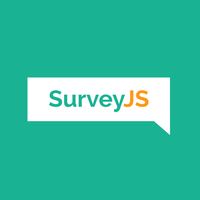i18next-http-backend
locize-cli
Our great sponsors
| i18next-http-backend | locize-cli | |
|---|---|---|
| 6 | 6 | |
| 413 | 62 | |
| 2.4% | - | |
| 7.4 | 7.7 | |
| 7 days ago | 15 days ago | |
| JavaScript | JavaScript | |
| MIT License | MIT License |
Stars - the number of stars that a project has on GitHub. Growth - month over month growth in stars.
Activity is a relative number indicating how actively a project is being developed. Recent commits have higher weight than older ones.
For example, an activity of 9.0 indicates that a project is amongst the top 10% of the most actively developed projects that we are tracking.
i18next-http-backend
-
Supercharge Your TypeScript App: Mastering i18next for Type-Safe Translations
A React.js based i18next setup with in-memory translation resources could also look very similar to the above example, so let's raise the bar a little bit and see what a setup with lazy loading translations like with i18next-http-backend looks like:
-
Implement multi-language Support in React
The next package will load the values depending on the language returned by the language detector.
-
How to properly internationalize a Vue application using i18next
import i18next from 'i18next' import I18NextVue from 'i18next-vue' import LanguageDetector from 'i18next-browser-languagedetector' import Backend from 'i18next-http-backend' export const i18nextPromise = i18next // i18next-http-backend // loads translations from your server // https://github.com/i18next/i18next-http-backend .use(Backend) // detect user language // learn more: https://github.com/i18next/i18next-browser-languageDetector .use(LanguageDetector) // init i18next // for all options read: https://www.i18next.com/overview/configuration-options .init({ debug: true, fallbackLng: 'en' }); export default function (app) { app.use(I18NextVue, { i18next }) return app }
-
The progressive guide to jQuery internationalization (i18n) using i18next
// ... $(function () { // use plugins and options as needed, for options, detail see // https://www.i18next.com i18next // i18next-http-backend // loads translations from your server // https://github.com/i18next/i18next-http-backend .use(i18nextHttpBackend) // detect user language // learn more: https://github.com/i18next/i18next-browser-languageDetector .use(i18nextBrowserLanguageDetector) // init i18next // for all options read: https://www.i18next.com/overview/configuration-options .init({ debug: true, fallbackLng: 'en' }, (err, t) => { if (err) return console.error(err); // ... }); });
-
How to Internationalize a React App
In addition, we need to install i18next-http-backend which allows us to fetch translations from a directory, and i18next-browser-languagedetector which allows us to detect the user's language:
-
How to properly internationalize a React application using i18next
import i18n from 'i18next'; import { initReactI18next } from 'react-i18next'; import LanguageDetector from 'i18next-browser-languagedetector'; import Backend from 'i18next-http-backend'; import { DateTime } from 'luxon'; i18n // i18next-http-backend // loads translations from your server // https://github.com/i18next/i18next-http-backend .use(Backend) // detect user language // learn more: https://github.com/i18next/i18next-browser-languageDetector .use(LanguageDetector) // pass the i18n instance to react-i18next. .use(initReactI18next) // init i18next // for all options read: https://www.i18next.com/overview/configuration-options .init({ debug: true, fallbackLng: 'en', interpolation: { escapeValue: false, // not needed for react as it escapes by default format: (value, format, lng) => { if (value instanceof Date) { return DateTime.fromJSDate(value).setLocale(lng).toLocaleString(DateTime[format]) } return value; } }, resources: { en: { translation: { description: { part1: 'Edit <1>src/App.js and save to reload.', part2: 'Learn React' }, counter: 'Changed language just once', counter_plural: 'Changed language already {{count}} times', footer: { date: 'Today is {{date, DATE_HUGE}}', date_morning: 'Good morning! Today is {{date, DATE_HUGE}} | Have a nice day!', date_afternoon: 'Good afternoon! It\'s {{date, DATE_HUGE}}', date_evening: 'Good evening! Today was the {{date, DATE_HUGE}}' } } }, de: { translation: { description: { part1: 'Ändere <1>src/App.js und speichere um neu zu laden.', part2: 'Lerne React' }, counter: 'Die Sprache wurde erst ein mal gewechselt', counter_plural: 'Die Sprache wurde {{count}} mal gewechselt', footer: { date: 'Heute ist {{date, DATE_HUGE}}', date_morning: 'Guten Morgen! Heute ist {{date, DATE_HUGE}} | Wünsche einen schönen Tag!', date_afternoon: 'Guten Tag! Es ist {{date, DATE_HUGE}}', date_evening: 'Guten Abend! Heute war {{date, DATE_HUGE}}' } } } } }); export default i18n;
locize-cli
-
Best internationalization for Gatsby
Now let's install the locize-cli:
-
Internationalization (i18n) for Deno with i18next
Just use this cli to synchronize the translations with your code. To see how this could look like check out Step 1 in this tutorial.
-
😱 Static HTML Export with i18n compatibility in Next.js 😱
install the locize-cli (npm i locize-cli)
-
How does server side internationalization (i18n) look like?
You can, for example, run an npm script script (or similar), which will use the cli to download the translations from locize into the appropriate folder next-i18next is looking in to (i.e. ./public/locales). This way the translations are bundled in your app and you will not generate any CDN downloads during runtime.
-
Give vue-i18n more superpowers❕
First you need to signup at locize and login. Then create a new project in locize and add your translations. You can add your translations either by importing the individual json files or via API or by using the CLI.
-
How to properly internationalize a React application using i18next
First in locize, create a dedicated version for production. Do not enable auto publish for that version but publish manually or via API or via CLI. Lastly, enable Cache-Control max-age for that production version.
What are some alternatives?
i18next-browser-languageDetector - language detector used in browser environment for i18next
next-i18next - The easiest way to translate your NextJs apps.
i18next-locize-backend - A simple i18next backend for locize.com which can be used in Node.js, in the browser and for Deno.
sync - deprecated Brave sync server. (sync now uses a fork of the Chromium sync protocol.)
Luxon - ⏱ A library for working with dates and times in JS
react-i18next - Internationalization for react done right. Using the i18next i18n ecosystem.
jquery-i18next - jQuery-i18next is a jQuery based Javascript internationalization library on top of i18next. It helps you to easily internationalize your web applications.
http - An isomorphic http client for Svelte applications
i18next - i18next: learn once - translate everywhere
Next.js - The React Framework
